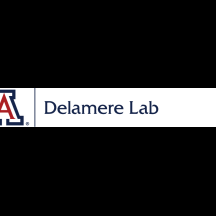| Title | The Significance of TRPV4 Channels and Hemichannels in the Lens and Ciliary Epithelium. |
| Publication Type | Journal Article |
| Year of Publication | 2016 |
| Authors | Delamere NA, Mandal A, Shahidullah M |
| Journal | J Ocul Pharmacol Ther |
| Volume | 32 |
| Issue | 8 |
| Pagination | 504-508 |
| Date Published | 2016 10 |
| ISSN | 1557-7732 |
| Keywords | Animals, Ciliary Body, Humans, Lens, Crystalline, TRPV Cation Channels |
| Abstract | To function normally, all cells must maintain ion homeostasis, establish a membrane potential, and regulate water content. These actions require active Na-K transport provided by Na,K-ATPase. The lens, however, is made up almost entirely of fiber cells that have little or no Na,K-ATPase activity. Lens ion and water homeostasis rely on Na,K-ATPase activity in a small number of cells at the periphery of epithelium monolayer. Therefore, the function of the epithelium must be integrated with the needs of the fiber mass. This suggests that a remote control mechanism may adjust Na,K-ATPase activity to match increases or decreases of ion leakage, which may occur a considerable distance away. Here, we review evidence that TRPV4 channels in the epithelium become activated when the lens is subjected to osmotic- or damage-induced swelling. This triggers a chain of events in the lens epithelium that opens connexin hemichannels, allowing ATP release that stimulates purinergic receptors, activates Src family tyrosine kinases, and increases Na,K-ATPase activity. Recent studies also revealed functional connexin hemichannels along with TRPV4 channels in nonpigmented ciliary epithelial (NPE) cells that secrete aqueous humor into the eye. Because TRPV4 channels are mechanosensitive, we speculate they might enable the NPE to respond to stimuli such as mechanical distortion associated with volume homeostasis during fluid transfer across the ciliary epithelium or changes in intraocular pressure. |
| DOI | 10.1089/jop.2016.0054 |
| Alternate Journal | J Ocul Pharmacol Ther |
| PubMed ID | 27513167 |
| PubMed Central ID | PMC5069728 |
| Grant List | R01 EY009532 / EY / NEI NIH HHS / United States F32 EY006915 / EY / NEI NIH HHS / United States |
The Significance of TRPV4 Channels and Hemichannels in the Lens and Ciliary Epithelium.
Profile Reference:
Nick Delamere

